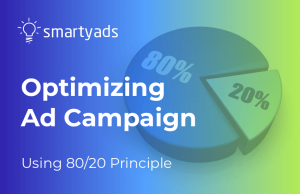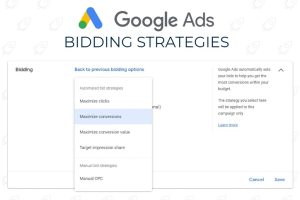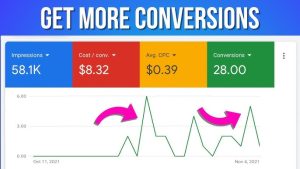Google Ads is an online advertising platform that allows businesses to create ads that appear on Google search results and other websites. When someone searches for a product or service, these ads show up, helping businesses reach potential customers right when they’re looking for something specific. It’s a way to get your message in front of the right people at the right time!
In today’s digital world, Google Ads can be a powerful tool for businesses wanting to connect with their audience. But simply launching a campaign isn’t enough; you need to optimize it to really maximize your results.
The Importance of Regular Optimization
Regular optimization helps to keep your campaigns aligned with your business goals and market dynamics. By consistently analyzing performance metrics, you can identify underperforming ads, adjust bids, and refine targeting strategies.
Quick Steps to Optimize Google Ads:
- Understanding these basics sets the stage for effective optimization.
- Conduct thorough keyword research to identify relevant keywords that resonate with your audience.
- Craft engaging ad copy that highlights unique selling points and includes a strong call to action.
- Utilize ad extensions to enhance your ads with additional information, increasing engagement and visibility.
- Optimize landing pages to ensure they are relevant, fast-loading, and designed for conversions.
- Monitor and adjust bids regularly based on performance metrics.
- Leverage remarketing techniques to target previous visitors with tailored ads to boost conversion chances.
If you’re using Google Ads, you know how important it is to make every dollar count. Optimizing your ads can help you connect with the right audience and boost your results. Here are seven straightforward tips to help you get the most out of your campaigns.
1. Do Your Keyword Research
Start by digging into what keywords your potential customers are actually searching for. Tools like Google Keyword Planner can help you find the right terms. Aim for long-tail keywords—they’re more specific and often lead to better conversions since they match what users are really looking for.
2. Write Engaging Ad Copy
Your ad copy is your chance to shine! Make it clear, engaging, and focused on the benefits of what you’re offering. Use strong calls to action like “Shop Now” or “Get Your Free Quote” to encourage clicks. Think about what would grab your attention as a customer!
3. Make Use of Ad Extensions
Ad extensions are a great way to add extra info to your ads without cluttering the main message. Use sitelink extensions to direct people to specific pages, call extensions for direct phone calls, and location extensions if you have a physical store. These can help your ad stand out and get more clicks.
4. Optimize Your Landing Pages
Once someone clicks your ad, they should land on a page that makes sense and feels inviting. Ensure your landing pages load quickly and look good on mobile devices. Keep the content relevant to what was promised in the ad, and make it easy for visitors to take the next step, whether that’s signing up or making a purchase.
5. Keep an Eye on Performance
Regularly check how your ads are performing. Look at metrics like click-through rates (CTR) and conversion rates to see what’s working and what’s not. If something isn’t delivering, don’t hesitate to tweak it. Think of it as fine-tuning your recipe—sometimes a small change can make a big difference!
6. Experiment with Bidding Strategies
Your bidding strategy can really affect your ad visibility. Try out different options like manual CPC or automated bidding strategies like Target CPA. Monitor how these changes impact your performance and find what works best for your goals.
7. Use Remarketing
Don’t forget about those who visited your site but didn’t convert. Remarketing allows you to show ads to those users again, reminding them of what they were interested in. Tailor these ads to encourage them to return and complete their purchase , it’s a great way to increase your chances of conversion.
Frequency of Google Ads Optimization
To maintain and enhance the performance of your Google Ads campaigns, regular optimization is essential. Aim to review and optimize your ads at least once a month. However, during the initial phases of a campaign or peak traffic periods, more frequent adjustments may be necessary. Regular monitoring enables you to quickly address performance changes, adapt to seasonal trends, and respond to shifts in consumer behavior, ensuring you maximize your return on investment (ROI).
Key Areas to Focus on for Optimization
- Keywords: Keep your keyword list fresh by adding relevant ones and removing those that aren’t performing well.
- Ad Copy: Experiment with different ad variations to see what resonates with your audience, and tweak them based on feedback.
- Bidding Strategies: Regularly check your bidding approach and adjust it based on how your ads are doing; don’t hesitate to try automated options.
- Landing Pages: Make sure your landing pages match your ads, load quickly, and create a smooth experience for visitors.
- Audience Targeting: Take time to refine your audience settings based on what you learn about their demographics and interests.
Conclusion
Optimizing Google Ads is not a one-time task but an ongoing journey. By focusing on solid keyword research, crafting engaging ad copy, utilizing ad extensions, optimizing landing pages, adjusting bids, and leveraging remarketing, you can significantly improve your Google Ads performance.










